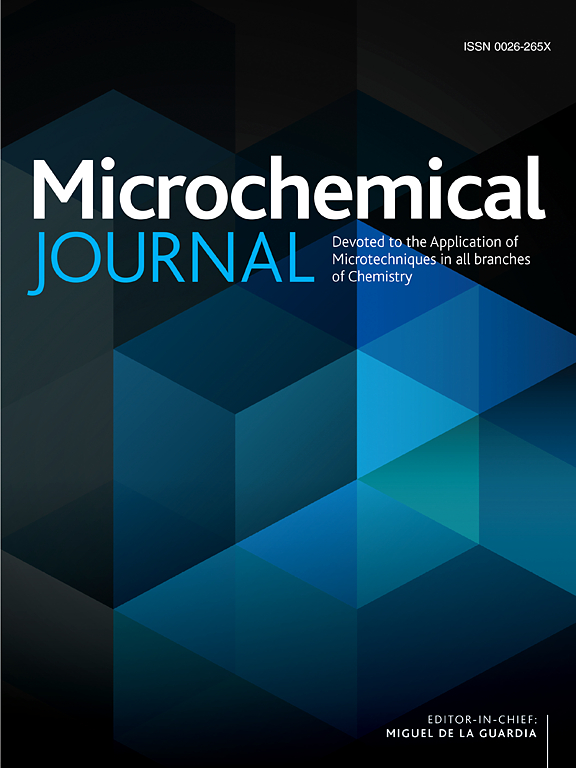Electronic structure modulation of Pt sites enabled by Na doped WO3 for ultrasensitive detection of H2S
IF 4.9
2区 化学
Q1 CHEMISTRY, ANALYTICAL
引用次数: 0
Abstract
Electronic modulation of Pt sites is of great significance in catalytic reaction involved chemical engineering process. Alkali metal doping is a promising strategy to modify the d orbit of Pt, which can effectively affect the reaction between material and adsorbates, however, the relationship is still unclear. Here, we have rationally designed Pt-modified Na-doped WO3 nanorods, and the electronic modulation of Pt can be finely modified by Na doping. The Pt-Na/WO3-Ar nanorods exhibit excellent H₂S sensing performance, with high response (Ra/Rg = 701 @ 1 ppm), low operating temperature (110 °C), and detection limit as low as 2.42 ppb. Experimental and theoretical results indicate that the introducing of Na effectively enhances the interaction between Pt nanoparticles (NPs) and WO3. Additionally, Na doping successfully modulate the d-band center of Pt, optimizing the adsorption and desorption processes during sensing. The synergistic effects of these components enable the Pt-Na/WO3-Ar sensor to exhibit outstanding H₂S sensing performance. Notably, the fabricated sensors are further used to monitor the hydrogen sulfide (H2S) of halitosis biomarkers, which holds significant application potential in environmental protection and medical diagnostics.

Na掺杂WO3使Pt位的电子结构调制用于超灵敏检测H2S
Pt位的电子调制在涉及化工过程的催化反应中具有重要意义。碱金属掺杂是一种很有前途的修饰Pt的d轨道的策略,它可以有效地影响材料与吸附剂之间的反应,但两者之间的关系尚不清楚。本文合理设计了Pt修饰的Na掺杂WO3纳米棒,通过Na掺杂可以很好地修饰Pt的电子调制。Pt-Na/WO3-Ar纳米棒具有优异的H₂S传感性能,具有高响应(Ra/Rg = 701 @ 1 ppm),低工作温度(110°C),检测限低至2.42 ppb。实验和理论结果表明,Na的引入有效地增强了Pt纳米粒子与WO3的相互作用。此外,Na掺杂成功地调节了Pt的d波段中心,优化了传感过程中的吸附和解吸过程。这些成分的协同效应使Pt-Na/WO3-Ar传感器表现出出色的H₂S传感性能。值得注意的是,该传感器还可用于监测口臭生物标志物中的硫化氢(H2S),在环境保护和医疗诊断方面具有重要的应用潜力。
本文章由计算机程序翻译,如有差异,请以英文原文为准。
求助全文
约1分钟内获得全文
求助全文
来源期刊

Microchemical Journal
化学-分析化学
CiteScore
8.70
自引率
8.30%
发文量
1131
审稿时长
1.9 months
期刊介绍:
The Microchemical Journal is a peer reviewed journal devoted to all aspects and phases of analytical chemistry and chemical analysis. The Microchemical Journal publishes articles which are at the forefront of modern analytical chemistry and cover innovations in the techniques to the finest possible limits. This includes fundamental aspects, instrumentation, new developments, innovative and novel methods and applications including environmental and clinical field.
Traditional classical analytical methods such as spectrophotometry and titrimetry as well as established instrumentation methods such as flame and graphite furnace atomic absorption spectrometry, gas chromatography, and modified glassy or carbon electrode electrochemical methods will be considered, provided they show significant improvements and novelty compared to the established methods.
 求助内容:
求助内容: 应助结果提醒方式:
应助结果提醒方式:


